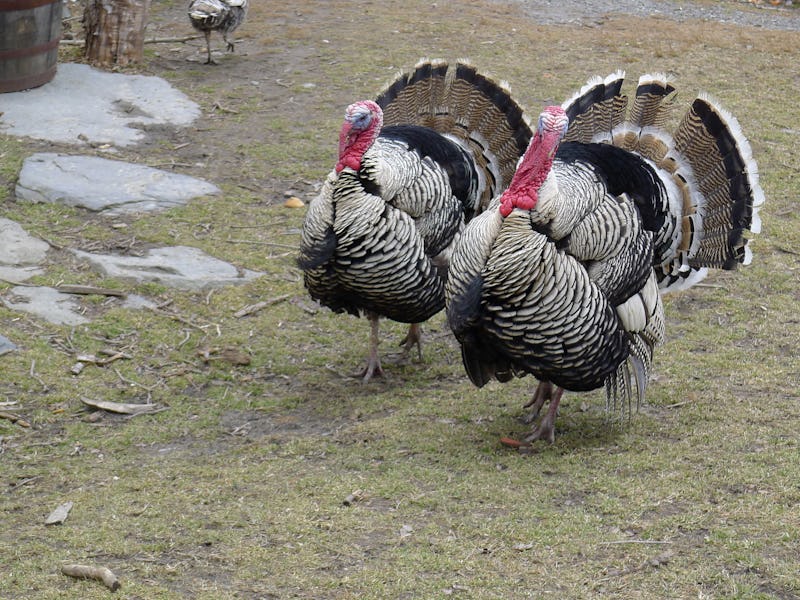Can Turkeys Fly? Why Our Thanksgiving Meal Can Only Sometimes Take Flight
Believe it or not, there is a downside to having large, muscular breasts.

Around this time every year, turkeys get their 15 minutes of fame, which is truly criminal because they’re so damn cool. In addition to having color-changing heads, wild turkeys can run about 25 miles per hour. When it comes to flying, however, the stars of our Thanksgiving meals have a bit of an unusual story.
Wild turkeys are arboreal, meaning they roost in trees. These turkeys can indeed fly in short, powerful bursts — according to Live Science, they may be able to fly as fast as 55 miles per hour. The thing is, turkeys look so stupid when they fly that it almost makes me never want to eat them again. It’s just too damn endearing:
Here’s where it gets complicated: while wild turkeys can zoom at their leisure, the turkeys we eat at Thanksgiving — you know, the domesticated kind — cannot fly. Why? For one thing, farmers have bred them over time to have very large breasts, which makes them better for eating.
The downside of having large, muscular breasts is that it inhibits the turkey’s flight. As Brian Palmer explained in The Washington Post, “The turkey breast gets stronger as it gets larger, but the animal’s power-to-mass ratio diminishes, so it can’t flap quickly enough to support sustained flight.”
Essentially, the turkeys become too thicc to fly.
Look at those nice dogs.
So before you bite into your Thanksgiving birds, please consider the splendor of the awkward hero you’re about to enjoy. Pour one out for all the thicc turkeys robbed of their flight.
By 2030, we’ll have lab-grown turkeys. Check out this video to find out more.